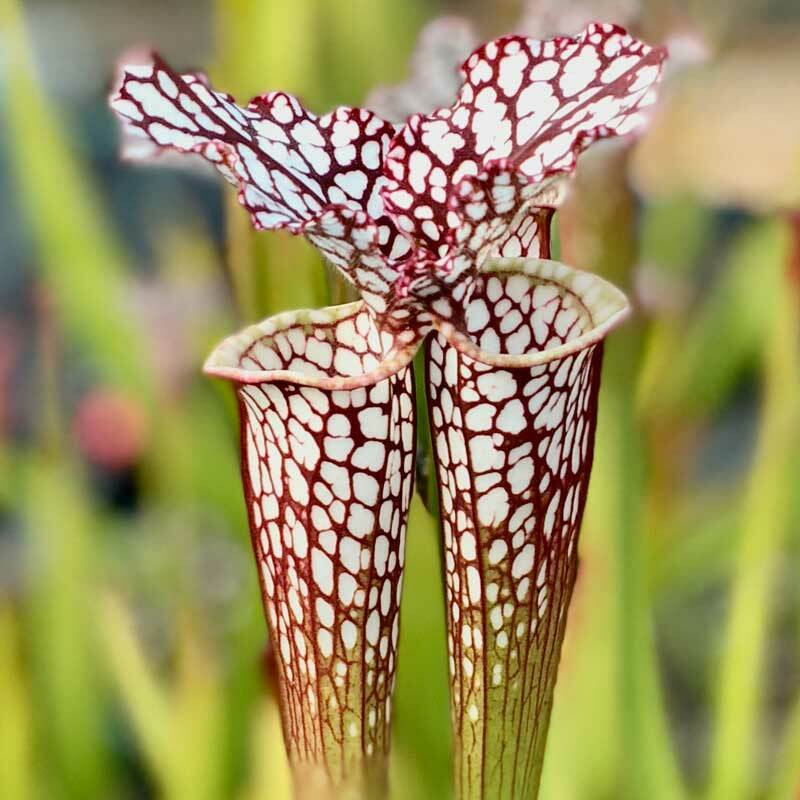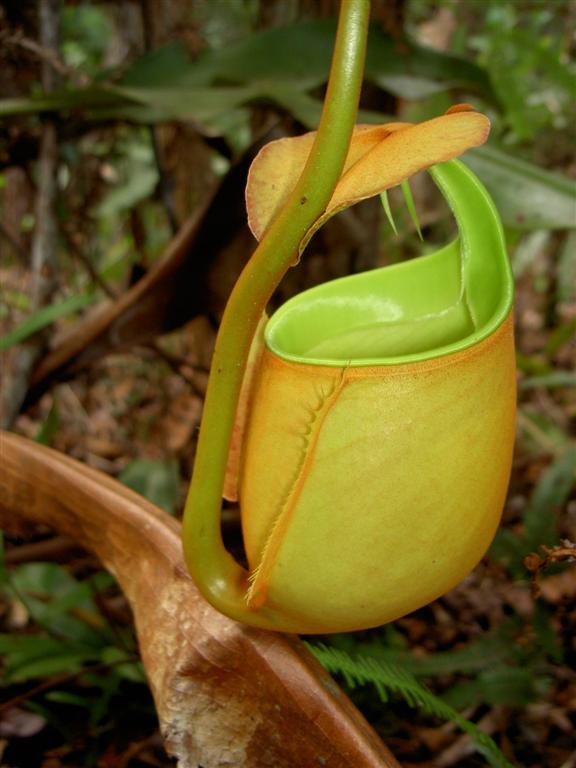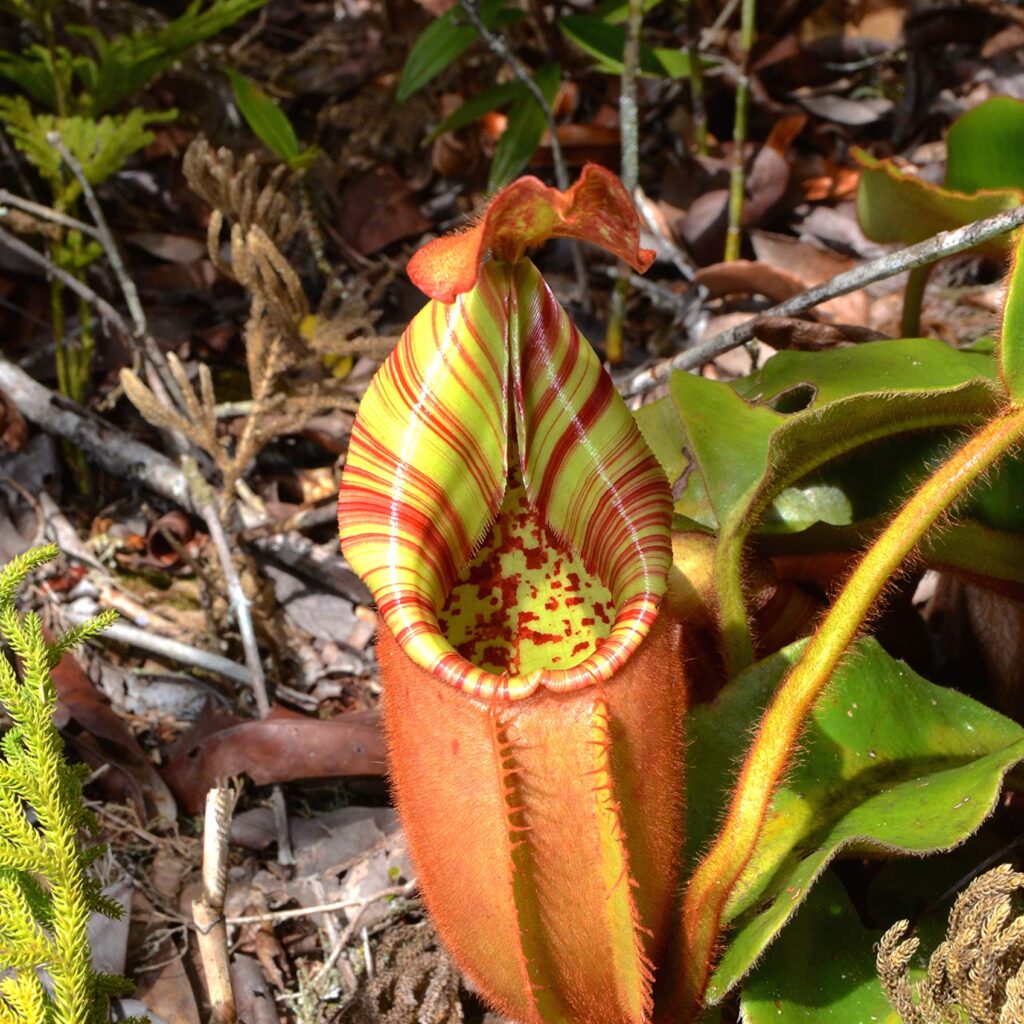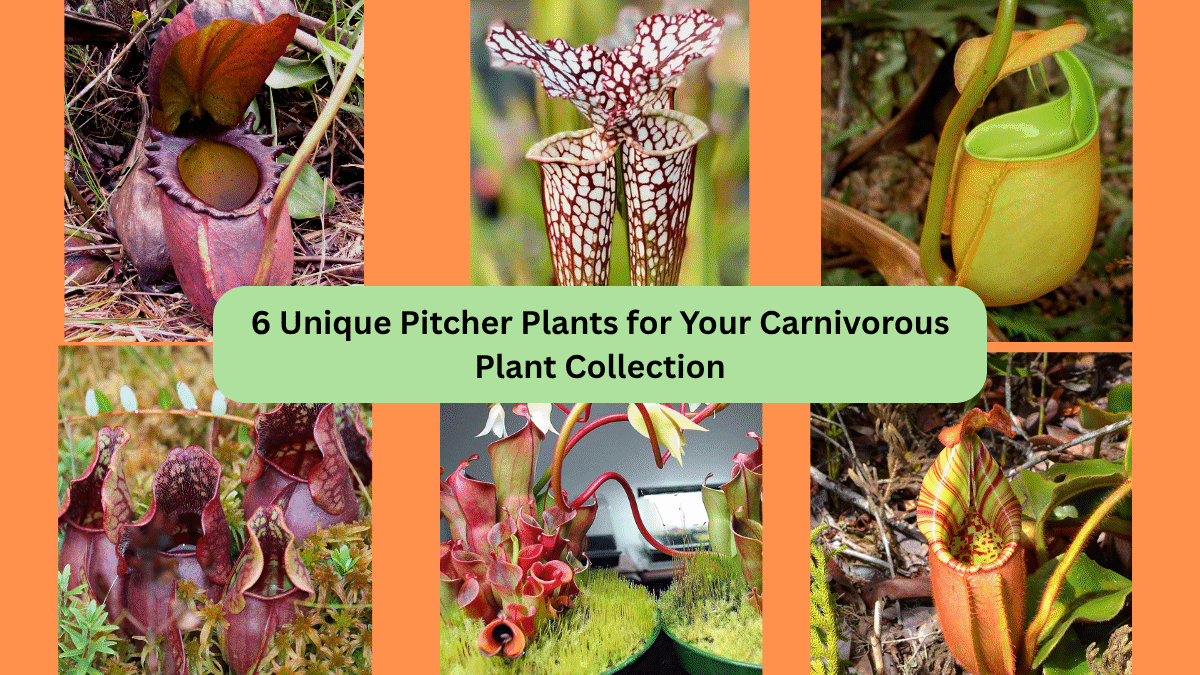For plant enthusiasts craving something a little wild and wonderfully bizarre, pitcher plants offer a fascinating glimpse into nature’s ingenuity. These carnivorous wonders use their deep, nectar-filled pitchers to lure, trap, and digest insects — a clever adaptation to nutrient-poor environments. With their exotic shapes, vivid colors, and otherworldly beauty, pitcher plants make captivating additions to any houseplant collection or terrarium. Here are six truly unique pitcher plants that will instantly elevate your carnivorous plant setup and spark conversation.

1. Nepenthes rajah (King Pitcher Plant)
Known as the “King of Pitcher Plants”, Nepenthes rajah is one of the largest and most impressive carnivorous plants on earth. Native to Borneo’s highland forests, it produces enormous pitchers capable of holding up to 2 liters of liquid — occasionally even trapping small vertebrates like frogs and rodents! Its deep, maroon-hued pitchers and broad, lush leaves make it a highly prized specimen among collectors. This rare beauty requires cool, humid conditions and nutrient-poor, well-draining soil to thrive.

2. Sarracenia leucophylla (White-Top Pitcher Plant)
With its striking white-and-green patterned hoods, Sarracenia leucophylla is one of the most beautiful North American pitcher plants. Native to the southeastern United States, it produces tall, elegant pitchers adorned with vibrant red veins. These features act as visual lures for unsuspecting insects. As one of the hardier pitcher plants, it thrives outdoors in sunny, bog-like conditions and even tolerates mild frosts. It’s perfect for gardeners seeking a unique, dramatic plant that turns heads and keeps pests at bay.

3. Nepenthes bicalcarata (Fanged Pitcher Plant)
If you’re after a pitcher plant with a sinister, otherworldly vibe, Nepenthes bicalcarata is your perfect pick. Native to Borneo’s swampy forests, it’s easily recognized by the two fang-like spines that extend over its pitcher’s opening. These unusual appendages help deter large insects from escaping. The plant’s vibrant green pitchers, tinged with red or orange, add a striking accent to carnivorous plant collections. It thrives in consistently humid, warm conditions and loves bright, filtered light.

4. Sarracenia purpurea (Purple Pitcher Plant)
A favorite among North American carnivorous plant enthusiasts, Sarracenia purpurea is known for its charming, squat pitchers and rich burgundy to deep purple hues. Unlike its tall, slender cousins, this species produces rosettes of ground-hugging pitchers that collect rainwater to drown and digest insects. It’s incredibly hardy and can withstand cold winters, making it ideal for outdoor bog gardens or terrariums. Its compact size and intricate veining make it a visually stunning addition to any plant display.

5. Nepenthes veitchii (Veitch’s Pitcher Plant)
Highly sought after by collectors, Nepenthes veitchii stands out with its dramatically flared, striped peristome (the pitcher’s rim) and fuzzy, ribbed exterior. Native to Borneo, this species is remarkably adaptable, thriving both as a lowland and highland variety. Its pitchers often display vivid shades of green, gold, and crimson, making it a showpiece in any carnivorous plant collection. With proper care — warm temperatures, high humidity, and filtered light — it rewards growers with eye-catching, long-lasting pitchers.

6. Heliamphora nutans (Marsh Pitcher Plant)
Representing the carnivorous flora of South America’s tepui mountains, Heliamphora nutans offers a unique, elegant form with slender, upright pitchers and bright, translucent nectar spoons. Unlike other pitcher plants, Heliamphora relies more on rainwater to trap prey than digestive liquids. Its delicate, graceful pitchers range from green to reddish hues depending on light exposure. This species thrives in cool, high-humidity environments with bright, indirect light. It’s a fantastic choice for advanced growers seeking a sophisticated and rare carnivorous species.
Closing Thought:
Carnivorous plants like pitcher plants offer so much more than unusual foliage — they bring drama, curiosity, and natural pest control to your space. Whether you’re an experienced grower or new to the world of carnivorous plants, these six unique pitcher species promise to captivate with their intricate designs and fascinating feeding habits. Add one (or all!) to your collection and enjoy a living showcase of nature’s most inventive creations.





Leave A Comment